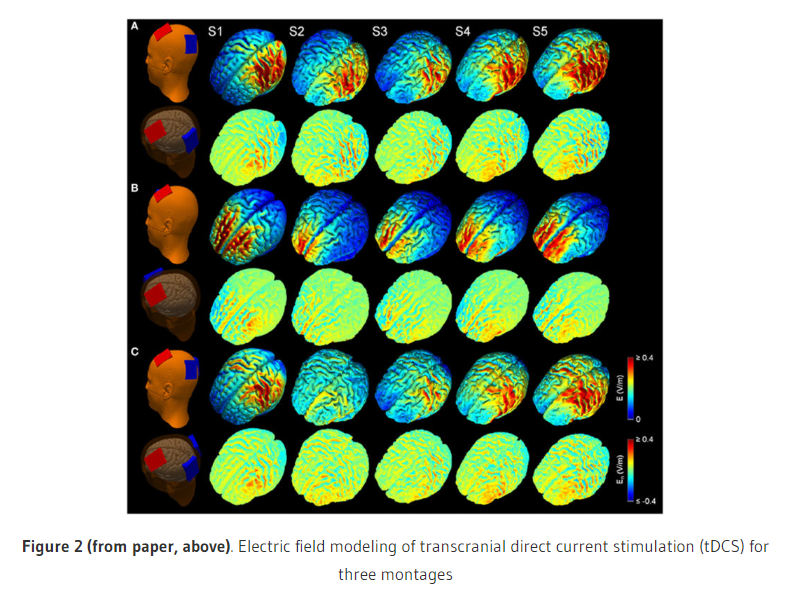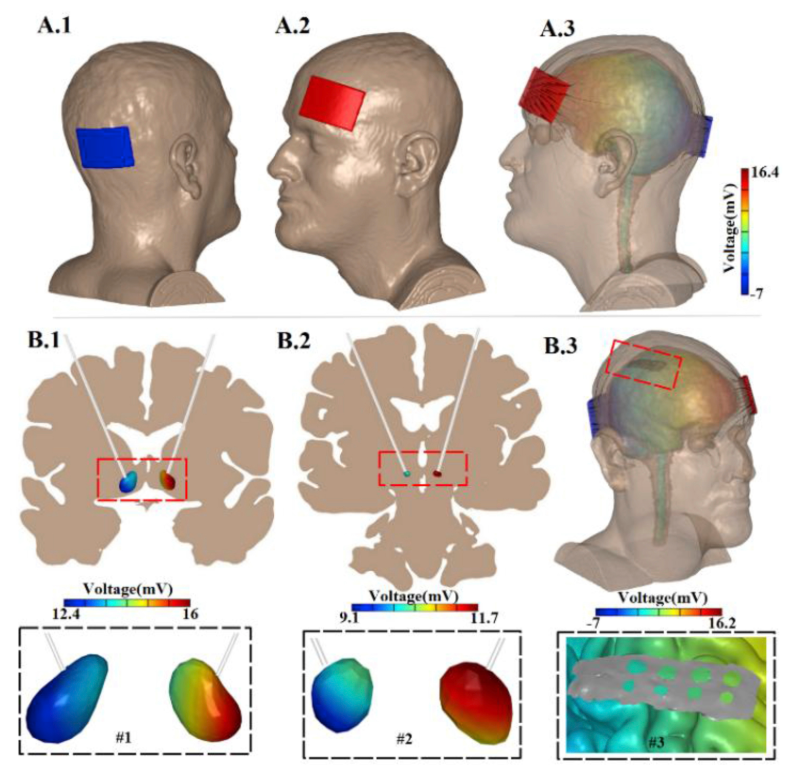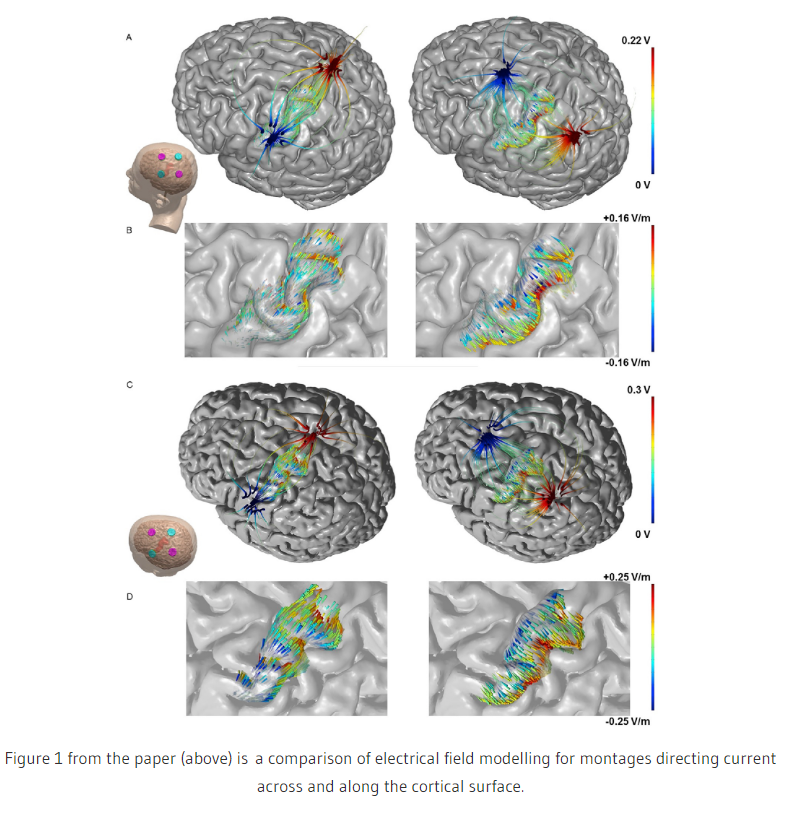Download: PDF published in Brain Stimulation – DOI
Pratik Y. Chhatbar, Steven A. Kautz, Istvan Takacs, Nathan C. Rowland, Gonzalo J. Revuelta, Mark S. George, Marom Bikson, Wuwei Feng
Abstract: Transcranial direct current stimulation (tDCS) is a promising brain modulation technique for several disease conditions. With this technique, some portion of the current penetrates through the scalp to the cortex and modulates cortical excitability, but a recent human cadaver study questions the amount. This insufficient intracerebral penetration of currents may partially explain the inconsistent and mixed results in tDCS studies to date. Experimental validation of a transcranial alternating current stimulation-generated electric field (EF) in vivo has been performed on the cortical (using electrocorticography, ECoG, electrodes), subcortical (using stereo electroencephalography, SEEG, electrodes) and deeper thalamic/subthalamic levels (using DBS electrodes). However, tDCS-generated EF measurements have never been attempted. Hypothesis: We aimed to demonstrate that tDCS generates biologically relevant EF as deep as the subthalamic level in vivo. Patients with movement disorders who have implanted deep brain stimulation (DBS) electrodes serve as a natural experimental model for thalamic/subthalamic recordings of tDCS-generated EF. We measured voltage changes from DBS electrodes and body resistance from tDCS electrodes in three subjects while applying direct current to the scalp at 2 mA and 4 mA over two tDCS montages. Voltage changes at the level of deep nuclei changed proportionally with the level of applied current and varied with different tDCS montages. Our findings suggest that scalp-applied tDCS generates biologically relevant EF. Incorporation of these experimental results may improve finite element analysis (FEA)-based models.































